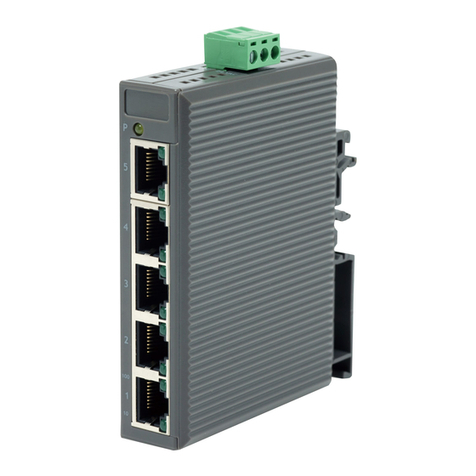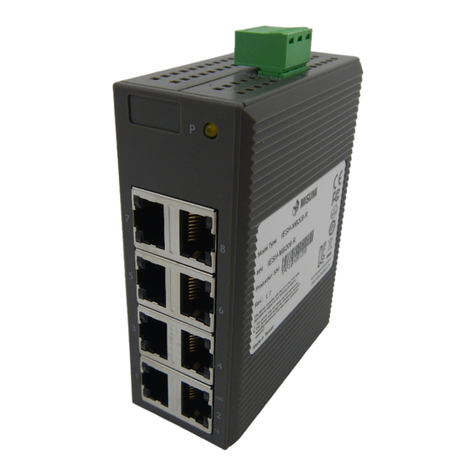
- 2 -
Overview
The IESH-MB205*/208*-C2E-R Series has a 5-port and 8-port
combination to simplify network expansion. There are two housing
types available for the user to select depending on the requirements of
their application. The IESH-MBxxx Series has a plastic housing and the
IESH-MBxxxM Series has a metal housing. The compact switches
provide a cost-effective solution for your industrial Ethernet connection
requirements.
The IESH-MB205*/208*-C2E-R Series provides 12/24/48 VDC (9.6 to
60 VDC) power input, and the switches are available with a standard
operating temperature range from -10 to 60°C. The switches are
rugged enough to operate reliably in harsh industrial environments.
To provide greater versatility for use with applications from different
industries, the IESH-MB205*/208*-C2E-R Series also allows users to
enable or disable broadcast storm protection (BSP), Quality of Service
(QoS) function via the DIP switches on the top panel.
The IESH-MB205*/208*-C2E-R switches can be easily installed with
DIN-rail mounting as well as distribution boxes. The DIN-rail mounting
capability and IP40 housing with LED indicators ensure that the plug-
and-play IESH-MB205*/208*-C2E-R switches are reliable and easy to
use.
Throughout this Quick Installation Guide, we use IESH-MB as
an abbreviation for
Misumi IESH-MB205*/208*-C2E-R Switch:
IESH-MB = Misumi IESH-MB205*/208*-C2E-R Switch
This device complies with part 15 of FCC Rules. Operation is
subject to the following two conditions: (1) This device may not
cause h
armful interference, and (2) this device must accept
any interference received, including interference that may
cause undesired operations.
Package Checklist
Your IESH-MB is shipped with the following items. If any of these items
are missing or damaged, please contact your customer service
representative for assistance.
•Misumi IESH-MB Switch
•Quick installation guide (printed)
•One Terminal block connector































